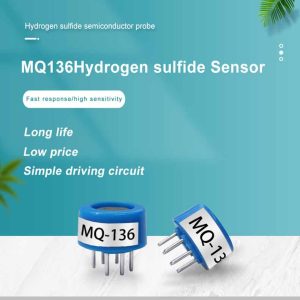-
Advancing Air Quality Monitoring: The Impact of Gas Sensors on Environmental Health
- Air quality is a critical determinant of environmental health, and poor air quality can have significant impacts on human well-being, ecosystems, and the economy. Monitoring air quality is essential for understanding the distribution and ……
- Chat Online
-
Description
Air quality is a critical determinant of environmental health, and poor air quality can have significant impacts on human well-being, ecosystems, and the economy. Monitoring air quality is essential for understanding the distribution and sources of air pollutants, assessing exposure levels, and informing policy decisions aimed at protecting public health and the environment. In recent years, advances in gas sensor technology have revolutionized air quality monitoring, enabling real-time, high-resolution measurements of air pollutants. This article explores the impact of gas sensors on environmental health and the ways in which they are advancing air quality monitoring.

Understanding Air Quality
Air quality refers to the condition of the air within the outdoor environment, including the concentrations of pollutants such as particulate matter (PM), nitrogen dioxide (NO2), sulfur dioxide (SO2), carbon monoxide (CO), ozone (O3), and volatile organic compounds (VOCs). These pollutants are emitted from various sources, including industrial facilities, vehicles, power plants, and natural processes. Exposure to high levels of air pollutants has been linked to respiratory and cardiovascular diseases, as well as adverse effects on ecosystems, agriculture, and climate.
Traditional air quality monitoring networks typically rely on a limited number of stationary monitoring stations that provide intermittent measurements of air pollutants. While these networks have been valuable for understanding regional air quality trends, they are often unable to capture local variations in pollutant concentrations and lack the temporal resolution needed to assess short-term exposure events.
The Role of Gas Sensors in Advancing Air Quality Monitoring
Gas sensors have emerged as a game-changing technology in the field of air quality monitoring, offering the ability to measure air pollutant concentrations in real time and at a finer spatial scale. These sensors detect specific gases and particulates by converting the concentration of the target substance into an electrical signal, allowing for continuous monitoring of air quality in diverse environments.
Gas sensors come in various types, including electrochemical sensors, metal oxide sensors, photoionization detectors, and laser-based sensors, each tailored to detect specific air pollutants. They can be deployed in stationary monitoring stations, integrated into mobile platforms such as drones and vehicles, or worn by individuals to assess personal exposure levels. This versatility makes gas sensors invaluable for capturing localized pollution hotspots, tracking pollutant emissions from mobile sources, and investigating indoor air quality.
Impact on Environmental Health
The widespread adoption of gas sensors has had a profound impact on environmental health by providing policymakers, researchers, and the public with unprecedented access to real-time air quality data. This timely information allows for rapid responses to pollution events, improved understanding of pollutant dispersion patterns, and the identification of pollution sources.
Gas sensors have also enabled community-based air quality monitoring initiatives, empowering citizens to actively engage in environmental stewardship and advocate for cleaner air. Through the use of low-cost, portable sensors, communities can map air pollution in their neighborhoods, raise awareness about local air quality issues, and collaborate with authorities to implement targeted interventions.
Furthermore, gas sensors play a crucial role in advancing our understanding of the health effects of air pollution. By capturing fine-scale variations in pollutant concentrations, researchers can investigate the associations between air quality and health outcomes with greater precision, enabling more effective public health interventions and policies.
Challenges and Opportunities
While gas sensors have significantly improved air quality monitoring, several challenges remain. Ensuring the accuracy and reliability of sensor measurements, addressing sensor drift and cross-sensitivity, and standardizing data quality across different sensor types are ongoing areas of focus for researchers and regulators.
There are also opportunities for further innovation, including the development of integrated sensor networks that combine data from multiple sources to provide comprehensive air quality assessments. Additionally, advancements in sensor miniaturization, energy efficiency, and data analytics will continue to expand the capabilities of air quality monitoring systems.

Conclusion
Gas sensors are driving a paradigm shift in air quality monitoring, offering real-time, high-resolution insights into air pollutant concentrations and their impacts on environmental health. By leveraging the power of gas sensors, we can gain a deeper understanding of air quality dynamics, mitigate pollution risks, and protect the well-being of current and future generations. As technology continues to evolve, the integration of advanced gas sensors into comprehensive air quality monitoring networks holds great promise for creating cleaner, healthier environments for all.
-
Recommend:
-
-
Gas detectors are crucial devices used in various industrie…
-
How do gas detectors ensure industrial safety?
Gas detectors play a crucial role in ensuring the safety of…
-
How Gas Sensors Help Combat Air Pollution?
Air pollution is a pressing global issue that poses signifi…
-
How can gas sensors be used in air quality monitoring?
Air pollution is a significant global concern that affects …
-
 : +86 155 8830 2704
: +86 155 8830 2704 : jxdziot@gmail.com
: jxdziot@gmail.com
